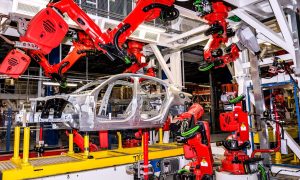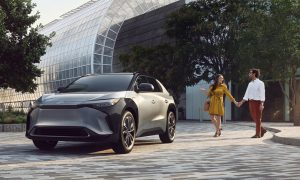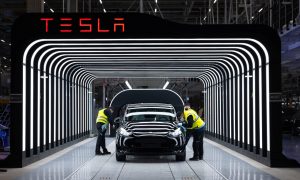News
Tesla Model S Charging Costs in Australia
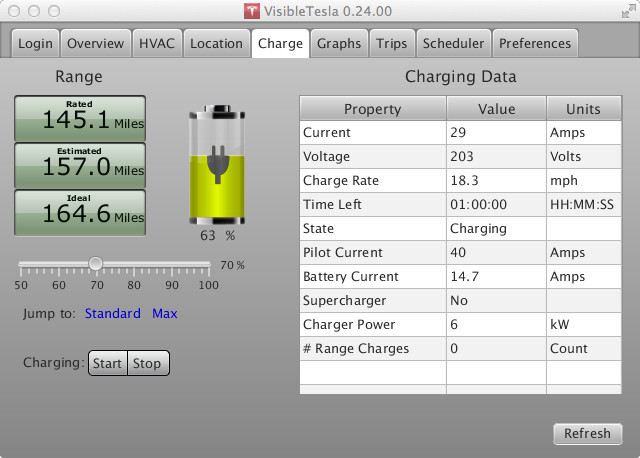
More than 2 years after the it first went on sale in the US the Model S arrived in Australia in late December 2014. As an early owner of the Model S the car generates a lot of interest from friends, neighbours and the general public when you’re out and about. One of the most common questions is how much does it cost to run. We need a new language to describe this as litre’s per 100km doesn’t work and a “full tank” in a Model S is less than a normal tank in a modern petrol car. The answer I find people find easiest to understand is $11 for a full charge which lasts for around 500kms.
Compared to a petrol car this is great, current models will give you 500 – 1000kms from a tank but you’ll spend $50 to $100 to fill them up (at the current, and relatively cheap fuel prices).
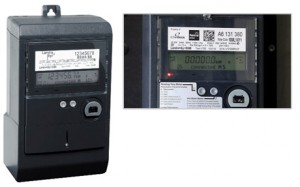
Victorian Government’s initiative called for an expansive roll out of digital smart meters across residential and small businesses. Source: Energy Australia
To understand where the $11 comes from let’s dig into electricity pricing in Australia a little more. Historically homes have been configured with analog meters. All the power we use is charged at a flat rate day and night. Optionally an off peak circuit was often installed which was only connected to the hot water service. Available into two variants supply is remotely controlled by the electricity company for circa 6 or 12 hours per day.
More recently smart meters are being installed on new dwellings and with consumers that have added solar photovoltaics to their home. In certain states such as Victoria blanket rollouts of smart meters have been known to occur. Once installed electricity is charged on tariffs that vary across different times of the day for weekdays and weekends. Tariffs vary across networks but generally consist of a peak morning or late afternoon & evening period, shoulder during the remaining waking hours on weekdays and across the weekend and off peak for overnight.
Charging Costs and Meter Options in Australia
For both analog and smart meters the difference in tariffs between their maximum and minimum are material. From a low of circa $0.10/kWh on off peak to a high of $0.50/kWh in peak periods.
RELATED: EV Basics: What’s a killowat hour?
Analog Meter
- If you’re on an analog meter you can wire your charger to a standard circuit and charge at any time, or choose one of the two controlled load circuits to get cheaper power but with less control. Note that you can’t mix standard and controlled circuits so you’ll have to choose one or the other. Having the electric company control when to supply your electricity may not work for you if you plan on taking consistent high length trips in your Model S each day. Especially since you’ll likely require a nightly charge with a guarantee of no interruption.
Smart Meter
- If you’re on a smart meter, find out what time your off peak starts, configure your Tesla Model S to start charging at this time, plug in every night and you’ll almost certainly be charging on the cheapest power all the time. The off peak periods are long enough to get a full charge on a standard 32 Amp charger for all but the most depleted of batteries. On the rare occasion that you can’t complete your charge during the off peak period you’ll simply push the small remaining part into a shoulder or peak tariff.
A smart meter provides much greater flexibility, but the real cost of changing from an analog needs to take into consideration your whole home.
The average Australian home uses around 20kWh of electricity per day or and the average vehicle travels 270kms per week. In Model S terms this equates to 140 kWh per week on your home and 55-65 kWh per week to charge the car.
Obviously these figures vary enormously depending on your personal home and driving habits but car charging is likely to remain the smaller part.
What about charging from solar? Everyone that has solar has a smart meter and hence the ability to control the price they pay for the electricity which is used for charging their car. Households that installed solar early are on feed-in tariffs which pay them for all or just the excess power that they produce. In the majority of cases these rates are much higher than the cheapest power available over night. Those that aren’t on solar power are mostly being paid feed in tariffs which are only marginally lower than the price they pay for power over night.
ALSO SEE: One Telsa owner’s journey with installing photovoltaic cells through SolarCity
Most users will be better off using their solar in their home or selling it then buying cheap power overnight to charge their car. There are certainly users for whom it would be cheaper to charge from the power generated through their solar system, but the cost and complexity of making it work is unlikely to stack up. Some form of power router is needed that can take into account usage by other appliances in your home, the tariffs, the amount of charge your car needs each day and the potentially intermittent supply of sun on any given day.
LEARN MORE: How to reduce your electricity usage at home in Australia?
Elon Musk
Tesla Supercharger Diner food menu gets a sneak peek as construction closes out
What are you ordering at the Tesla Diner?

The Tesla Supercharger Diner in Los Angeles is nearing completion as construction appears to be winding down significantly. However, the more minor details, such as what the company will serve at its 50s-style diner for food, are starting to be revealed.
Tesla’s Supercharger Diner is set to open soon, seven years after CEO Elon Musk first drafted the idea in a post on X in 2018. Musk has largely come through on most of what he envisioned for the project: the diner, the massive movie screens, and the intended vibe are all present, thanks to the aerial and ground footage shared on social media.
We already know the Diner will be open 24/7, based on decals placed on the front door of the restaurant that were shared earlier this week. We assume that Tesla Optimus will come into play for these long and uninterrupted hours.
The Tesla Diner is basically finished—here’s what it looks like
As far as the food, Tesla does have an email also printed on the front door of the Diner, but we did not receive any response back (yet) about what cuisine it will be offering. We figured it would be nothing fancy and it would be typical diner staples: burgers, fries, wings, milkshakes, etc.
According to pictures taken by @Tesla_lighting_, which were shared by Not a Tesla App, the food will be just that: quick and affordable meals that diners do well. It’s nothing crazy, just typical staples you’d find at any diner, just with a Tesla twist:
Tesla Diner food:
• Burgers
• Fries
• Chicken Wings
• Hot Dogs
• Hand-spun milkshakes
• And more https://t.co/kzFf20YZQq pic.twitter.com/aRv02TzouY— Sawyer Merritt (@SawyerMerritt) July 17, 2025
As the food menu is finalized, we will be sure to share any details Tesla provides, including a full list of what will be served and its prices.
Additionally, the entire property appears to be nearing its final construction stages, and it seems it may even be nearing completion. The movie screens are already up and showing videos of things like SpaceX launches.
There are many cars already using the Superchargers at the restaurant, and employees inside the facility look to be putting the finishing touches on the interior.
🚨 Boots on the ground at the Tesla Diner:
— TESLARATI (@Teslarati) July 17, 2025
It’s almost reminiscent of a Tesla version of a Buc-ee’s, a southern staple convenience store that offers much more than a traditional gas station. Of course, Tesla’s version is futuristic and more catered to the company’s image, but the idea is the same.
It’s a one-stop shop for anything you’d need to recharge as a Tesla owner. Los Angeles building permits have not yet revealed the date for the restaurant’s initial operation, but Tesla may have its eye on a target date that will likely be announced during next week’s Earnings Call.
News
Tesla’s longer Model Y did not scale back requests for this vehicle type from fans
Tesla fans are happy with the new Model Y, but they’re still vocal about the need for something else.
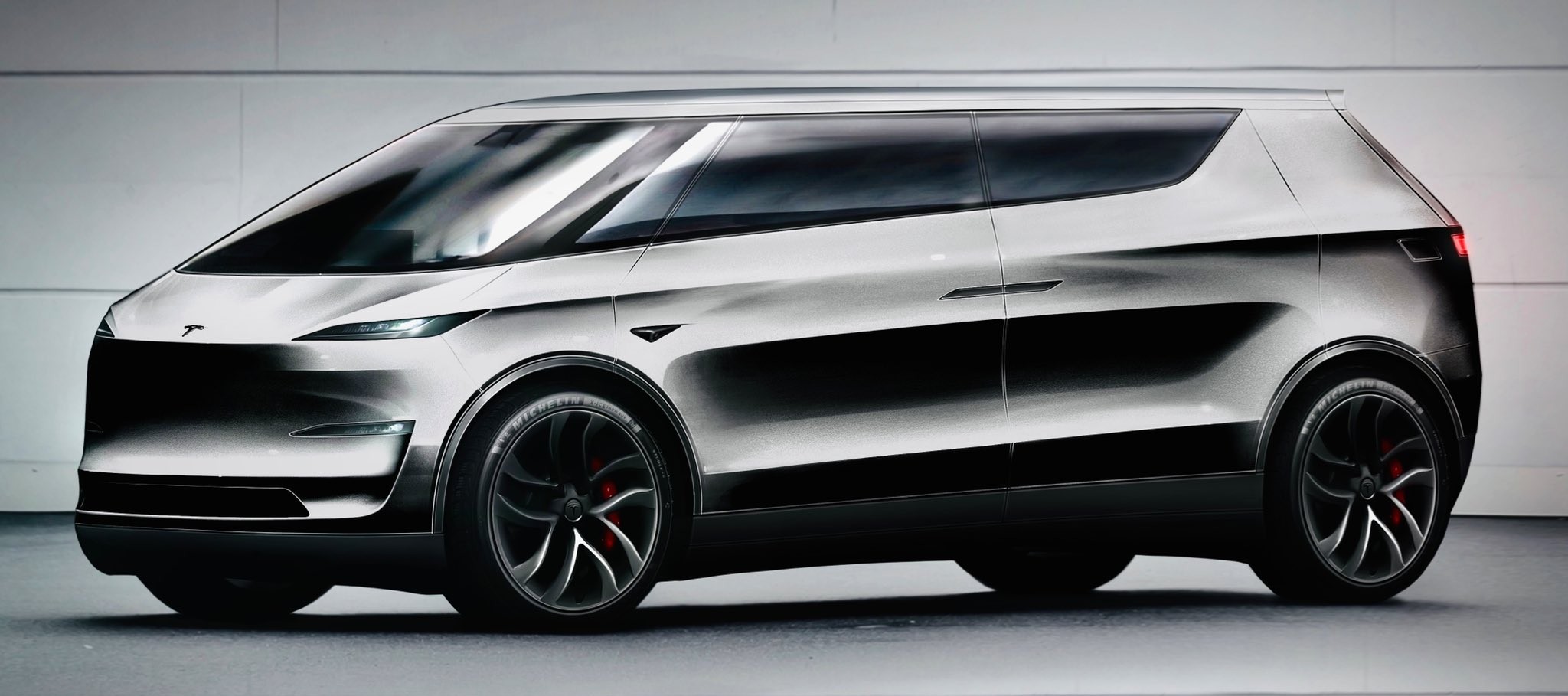
Tesla launched a slightly longer version of the Model Y all-electric crossover in China, and with it being extremely likely that the vehicle will make its way to other markets, including the United States, fans are still looking for something more.
The new Model Y L in China boasts a slightly larger wheelbase than its original version, giving slightly more interior room with a sixth seat, thanks to a third row.
Tesla exec hints at useful and potentially killer Model Y L feature
Tesla has said throughout the past year that it would focus on developing its affordable, compact models, which were set to begin production in the first half of the year. The company has not indicated whether it met that timeline or not, but many are hoping to see unveilings of those designs potentially during the Q3 earnings call.
However, the modifications to the Model Y, which have not yet been officially announced for any markets outside of China, still don’t seem to be what owners and fans are looking forward to. Instead, they are hoping for something larger.
A few months ago, I reported on the overall consensus within the Tesla community that the company needs a full-size SUV, minivan, or even a cargo van that would be ideal for camping or business use.
Tesla is missing one type of vehicle in its lineup and fans want it fast
That mentality still seems very present amongst fans and owners, who state that a full-size SUV with enough seating for a larger family, more capability in terms of cargo space for camping or business operation, and something to compete with gas cars like the Chevrolet Tahoe, Ford Expedition, or electric ones like the Volkswagen ID.BUZZ.
We asked the question on X, and Tesla fans were nearly unanimously in support of a larger SUV or minivan-type vehicle for the company’s lineup:
🚨 More and more people are *still* saying that, despite this new, longer Model Y, Tesla still needs a true three-row SUV
Do you agree? https://t.co/QmbRDcCE08 pic.twitter.com/p6m5zB4sDZ
— TESLARATI (@Teslarati) July 16, 2025
Here’s what some of the respondents said:
100% agree, we need a larger vehicle.
Our model Y is quickly getting too small for our family of 5 as the kids grow. A slightly longer Y with an extra seat is nice but it’s not enough if you’re looking to take it on road trips/vacations/ kids sports gear etc.
Unfortunately we…
— Anthony Hunter (@_LiarsDice_) July 17, 2025
Had to buy a Kia Carnival Hybrid because Tesla doesn’t have a true 3 row vehicle with proper space and respectable range. pic.twitter.com/pzwFyHU8Gi
— Neil, like the astronaut (@Neileeyo) July 17, 2025
Agreed! I’m not sure who created this but I liked it enough to save it. pic.twitter.com/Sof5nMehjS
— 🦉Wise Words of Wisdom – Inspirational Quotes (IQ) (@WiseWordsIQ) July 16, 2025
Tesla is certainly aware that many of its owners would like the company to develop something larger that competes with the large SUVs on the market.
However, it has not stated that anything like that is in the current plans for future vehicles, as it has made a concerted effort to develop Robotaxi alongside the affordable, compact models that it claims are in development.
It has already unveiled the Robovan, a people-mover that can seat up to 20 passengers in a lounge-like interior.
The Robovan will be completely driverless, so it’s unlikely we will see it before the release of a fully autonomous Full Self-Driving suite from Tesla.
Energy
Tesla launches first Virtual Power Plant in UK – get paid to use solar
Tesla has launched its first-ever Virtual Power Plant program in the United Kingdom.

Tesla has launched its first-ever Virtual Power Plant program in the United Kingdom. This feature enables users of solar panels and energy storage systems to sell their excess energy back to the grid.
Tesla is utilizing Octopus Energy, a British renewable energy company that operates in multiple markets, including the UK, France, Germany, Italy, Spain, Australia, Japan, New Zealand, and the United States, as the provider for the VPP launch in the region.
The company states that those who enroll in the program can earn up to £300 per month.
Tesla has operated several VPP programs worldwide, most notably in California, Texas, Connecticut, and the U.S. territory of Puerto Rico. This is not the first time Tesla has operated a VPP outside the United States, as there are programs in Australia, Japan, and New Zealand.
This is its first in the UK:
Our first VPP in the UK
You can get paid to share your energy – store excess energy in your Powerwall & sell it back to the grid
You’re making £££ and the community is powered by clean energy
Win-win pic.twitter.com/evhMtJpgy1
— Tesla UK (@tesla_uk) July 17, 2025
Tesla is not the only company that is working with Octopus Energy in the UK for the VPP, as it joins SolarEdge, GivEnergy, and Enphase as other companies that utilize the Octopus platform for their project operations.
It has been six years since Tesla launched its first VPP, as it started its first in Australia back in 2019. In 2024, Tesla paid out over $10 million to those participating in the program.
Participating in the VPP program that Tesla offers not only provides enrolled individuals with the opportunity to earn money, but it also contributes to grid stabilization by supporting local energy grids.
-

 Elon Musk1 day ago
Elon Musk1 day agoWaymo responds to Tesla’s Robotaxi expansion in Austin with bold statement
-

 News1 day ago
News1 day agoTesla exec hints at useful and potentially killer Model Y L feature
-

 Elon Musk2 days ago
Elon Musk2 days agoElon Musk reveals SpaceX’s target for Starship’s 10th launch
-

 Elon Musk3 days ago
Elon Musk3 days agoTesla ups Robotaxi fare price to another comical figure with service area expansion
-

 News1 day ago
News1 day agoTesla’s longer Model Y did not scale back requests for this vehicle type from fans
-

 News1 day ago
News1 day ago“Worthy of respect:” Six-seat Model Y L acknowledged by Tesla China’s biggest rivals
-

 News2 days ago
News2 days agoFirst glimpse of Tesla Model Y with six seats and extended wheelbase
-

 Elon Musk2 days ago
Elon Musk2 days agoElon Musk confirms Tesla is already rolling out a new feature for in-car Grok



